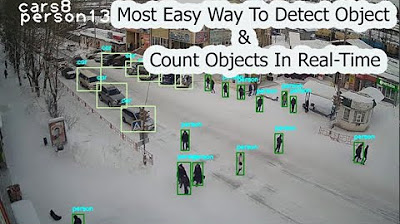Hate Speech Detection Using Machine Learning | ML Projects Using Python | Simplilearn
Summary
TLDRIn this engaging session by Simply Learn, viewers are introduced to hate speech detection using machine learning. The video covers the definition of hate speech, highlights its detrimental effects, and guides participants through a hands-on coding demo using Python libraries like Pandas, NumPy, and Scikit-learn. Key steps include cleaning text data, training a decision tree classifier, and testing the model with sample sentences. Viewers are encouraged to interact, ask questions, and subscribe for more tech updates, making this session both informative and interactive.
Takeaways
- 😀 The session focuses on detecting hate speech using machine learning techniques.
- 📊 Hate speech is defined as speech that disparages individuals based on race, religion, nationality, sexual orientation, or gender identity.
- 🔍 Identifying hate speech is crucial to mitigate its negative impacts on individuals and communities.
- 💻 The session includes a hands-on demo using Python and various libraries for hate speech detection.
- 📚 Participants are encouraged to subscribe to the Simply Learn YouTube channel for regular updates on technology.
- ⏰ A quiz question is posed to engage participants, testing their knowledge of Python keywords.
- 🛠️ Key Python libraries used in the demo include Pandas for data manipulation and NumPy for numerical operations.
- 📈 The CountVectorizer from Scikit-learn is utilized to convert text into a numerical format for analysis.
- 🧹 A text-cleaning function is implemented to preprocess tweet data for effective analysis.
- 🚀 The demonstration shows how to split data into training and testing sets and how to train a machine learning model.
Q & A
What is the main focus of the workshop presented in the transcript?
-The workshop focuses on detecting hate speech using machine learning techniques.
What constitutes hate speech according to the presenter?
-Hate speech is defined as any speech that disparages a group of people based on race, religion, nationality, sexual orientation, or gender identity.
Why is it important to detect hate speech?
-Detecting hate speech is crucial as it helps mitigate its negative impacts, which can include promoting violence, causing anxiety and fear, and harming relationships between different racial and ethnic groups.
What programming language and libraries are used in the hate speech detection demonstration?
-The demonstration uses Python along with libraries such as pandas, NumPy, and scikit-learn for data manipulation and machine learning.
What is the purpose of the Count Vectorizer in the code?
-The Count Vectorizer is used to convert text into a vector format based on the frequency of words appearing in the text.
How does the presenter encourage audience interaction during the session?
-The presenter encourages audience interaction by posing a quiz question about Python keywords and inviting participants to respond in the chat.
What are the steps involved in preparing the dataset for the hate speech detection model?
-The steps include loading the dataset, adding labels for hate speech and offensive language, and cleaning the text data to remove unnecessary characters.
What is the role of the Decision Tree Classifier in the demonstration?
-The Decision Tree Classifier is a supervised machine learning algorithm used to make predictions about whether a piece of text qualifies as hate speech.
What is the significance of splitting the dataset into training and testing sets?
-Splitting the dataset into training and testing sets is important for evaluating the performance of the machine learning model to ensure it generalizes well to new, unseen data.
How does the presenter conclude the session?
-The presenter concludes the session by inviting questions, reminding viewers to check course links, and encouraging them to subscribe to the YouTube channel for more updates.
Outlines

このセクションは有料ユーザー限定です。 アクセスするには、アップグレードをお願いします。
今すぐアップグレードMindmap

このセクションは有料ユーザー限定です。 アクセスするには、アップグレードをお願いします。
今すぐアップグレードKeywords

このセクションは有料ユーザー限定です。 アクセスするには、アップグレードをお願いします。
今すぐアップグレードHighlights

このセクションは有料ユーザー限定です。 アクセスするには、アップグレードをお願いします。
今すぐアップグレードTranscripts

このセクションは有料ユーザー限定です。 アクセスするには、アップグレードをお願いします。
今すぐアップグレード関連動画をさらに表示

Object Detection Using OpenCV Python | Object Detection OpenCV Tutorial | Simplilearn

Most Easy Way To Object Detection & Object Counting In Real Time | computer vision | python opencv

Supervised Learning | Unsupervised Learning | Machine Learning Tutorial | 2023 | Simplilearn

Introduction to ML: What is Machine Learning? | ML for Beginners

Lecture 06: Exploring Unsupervised Learning: From Clustering to Anomaly Detection

Kalibrasi dan Pengoperasian Osiloskop Analog
5.0 / 5 (0 votes)
